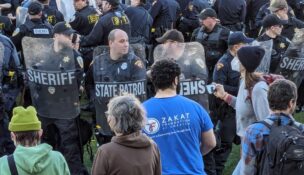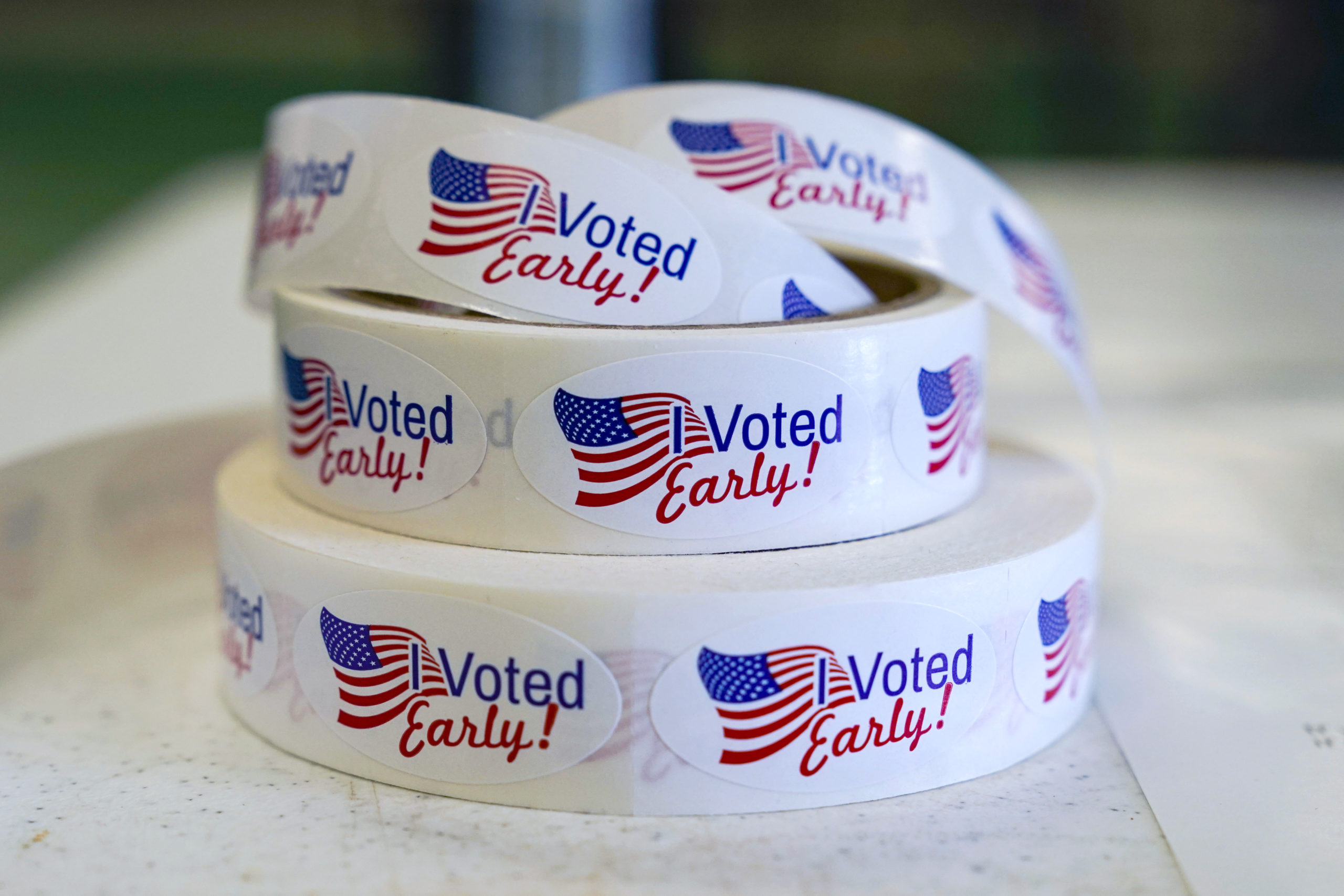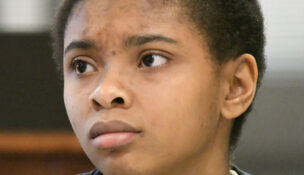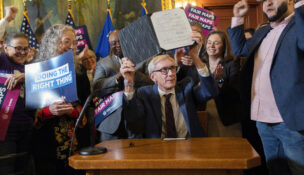Supreme Court takes three new cases
By: WISCONSIN LAW JOURNAL STAFF//June 30, 2011//
The Wisconsin Supreme Court has voted to accept three new cases.
In this case, the Supreme Court examines case law involving the “attenuation doctrine,” which provides that evidence obtained by illegal means may nonetheless be admissible if the connection between the evidence and the illegal means is sufficiently attenuated or remote.
On appeal, Felix argued that all physical evidence and statements derived from the warrantless arrest in his home should have been suppressed under both the federal and Wisconsin constitutions, pursuant to Payton v. New York, 445 U.S. 573 (1980); Brown v. Illinois, 422 U.S. 590 (1975); and Laasch v. State, 84 Wis. 2d 587, 267 N.W.2d 278 (1978), modified by State v. Smith, 131 Wis. 2d 220, 240, 388 N.W.2d 601 (1986).
The state’s argument on appeal was assumed the warrantless arrest was illegal under Payton, neither the defendant’s statements to police nor evidence derived from them need be suppressed as fruits of an illegal arrest. The state cited Harris, and State v. Roberson, 2005 WI App 195, 287 Wis. 2d 403, 704 N.W.2d 302 (Roberson I), aff’d on other grounds, 2006 WI 80, 292 Wis. 2d 280, 717 N.W.2d 111 (Roberson II).
The Supreme Court is expected to decide under Wis. Const. art. I, § 11, which case governs an attenuation analysis following an in-home warrantless arrest in violation of Payton v. New York, 445 U.S. 573 (1980): the rule announced in New York v. Harris, 495 U.S. 14 (1990); or the three-factor test of Brown v. Illinois, 422 U.S. 590 (1975)? From Marathon County.
2010AP232-AC State v. Abbott Labs
This case involves the interpretation and application of statutes governing the relationship between drug companies and the state with respect to reimbursement of pharmacies through Wisconsin’s Medicaid program.
The first issue involves the test for determining a party’s right to a jury trial outlined in Village Food & Liquor Mart v. H&S Petroleum, Inc., 2002 WI 92, ¶16, 254 Wis. 2d 478, 647 N.W.2d 177. This test provides a party has a constitutional right to have a statutory claim tried to a jury when: (1) the cause of action created by the statute existed, was known, or recognized at common law at the time of the adoption of the Wisconsin Constitution in 1848; and (2) the action was recognized as at law in 1848. Here, the trial court determined that the § 100.18 claim was akin to common law “cheating” and the § 49.49 claim was akin in common law “fraud.”
The next certified issue involves the process by which Medicaid reimbursement prices are set. The state presented evidence from which an inference could be made that the legislature knew the reported AWP might be high, but had no way to know by how much because of conflicting information. The state also presented evidence that the legislature would have been obligated to reduce the reimbursement amounts if accurate AWP was known. The state argued because of federal regulations, if accurate AWP were available, the legislature would have to use it.
The third certified issue appears to involve the interpretation of § 49.49(4m)(b), providing forfeitures for those violations “for each statement, representation, concealment or failure.” The state argued that every claim from a pharmacy generated a statement about the relevant drugs AWP is part of the formula that determined the amount of reimbursement. The state argued these claims were made 1,440,000 times in the relevant time period.
Justice N. Patrick Crooks did not participate. From Dane County.
This certification involves the effect of Wis. Stat. ch. 885, regarding the use of videoconferencing, on prior law. More specifically, the Court of Appeals asks the Supreme Court to review whether Jon Soto’s statutory right to be physically present during a plea hearing was violated when the court conducted the hearing through video teleconferencing. The certification also asks whether the issue was properly preserved.
Under Wis. Stat. § 885.60(2)(a), a defendant in a criminal case is entitled to be “physically present” in the courtroom at all critical stages of the proceedings, including plea hearings.
Wisconsin Stat. § 971.04(1)(g) provides that a defendant “shall be present” at the pronouncement of judgment and the imposition of sentence. “Present” means “physically present.” See State v. Vennemann, 180 Wis. 2d 81, 93, 96, 508 N.W.2d 404 (1993). In State v. Koopmans, 210 Wis. 2d 670, 672, 679, 563 N.W.2d 528 (1997), the court held the defendant may not waive his statutory right to be present.
Soto, his attorney, and the state’s attorney appeared at the Trempealeau County courthouse. The judge communicated through video teleconferencing from the Jackson County courthouse. Both counsel and Soto advised the court that it was all right to conduct the plea hearing by video teleconferencing. Following his conviction, however, Soto filed a motion to withdraw his guilty plea, arguing that conducting the plea hearing via video teleconferencing violated his § 971.04(1)(g) rights.
The state conceded that Soto’s argument might have some force prior to the adoption of videoconferencing rules.
However, the state asserted that the adoption of § 885.60 superseded the holding in the Koopmans case and permitted a defendant to waive or forfeit his right to be physically present at the plea hearing. The Court of Appeals noted it cannot overturn existing precedent. Cook v. Cook, 208 Wis. 2d 166, 189-90, 560 N.W.2d 246 (1997).
A decision by the Supreme Court would harmonize rules created in 2008 governing the use of teleconferencing technology in criminal cases with existing precedent. From Trempealeau County.
Legal News
- Madison protests turn violent, hate crime probes follow
- Hyundai to pay $333,941 over alleged violations of Civil Relief Act, repossessing 26 servicemembers vehicles
- Federal judge tosses Democrats’ lawsuit challenging Wisconsin absentee voting requirements
- Wisconsin woman who argued she legally killed sex trafficker pleads guilty to homicide
- Gov. Evers to become first Midwest governor to join U.S. Climate Alliance’s Executive Committee
- Wisconsin lacks clear system for tracking police caught lying
- Police confirm ‘Heil Hitler’ salute during Madison pro-Palestinian protests, suspect identified
- Federal agencies failed to investigate Havana Syndrome, ignored crucial evidence and withheld information, attorney says during Congressional hearing
- As Patrick Beverley calls his actions ‘inexcusable,’ police announce they’ve opened an investigation
- Democrats spend $7 million from campaign war chest in TV ads, many directed at Milwaukee northern suburbs
- Biden lauds new Microsoft center on the same site where Trump’s Foxconn project failed
- Gov. Evers seeks applicants for Eau Claire County Circuit Court
WLJ People
- Power 30 Personal Injury Attorneys – Russell Nicolet
- Power 30 Personal Injury Attorneys – Benjamin Nicolet
- Power 30 Personal Injury Attorneys – Dustin T. Woehl
- Power 30 Personal Injury Attorneys – Katherine Metzger
- Power 30 Personal Injury Attorneys – Joseph Ryan
- Power 30 Personal Injury Attorneys – James M. Ryan
- Power 30 Personal Injury Attorneys – Dana Wachs
- Power 30 Personal Injury Attorneys – Mark L. Thomsen
- Power 30 Personal Injury Attorneys – Matthew Lein
- Power 30 Personal Injury Attorneys – Jeffrey A. Pitman
- Power 30 Personal Injury Attorneys – William Pemberton
- Power 30 Personal Injury Attorneys – Howard S. Sicula











